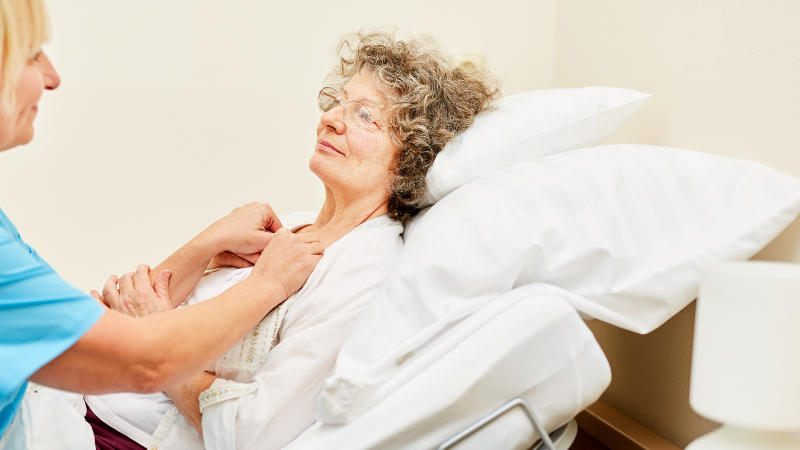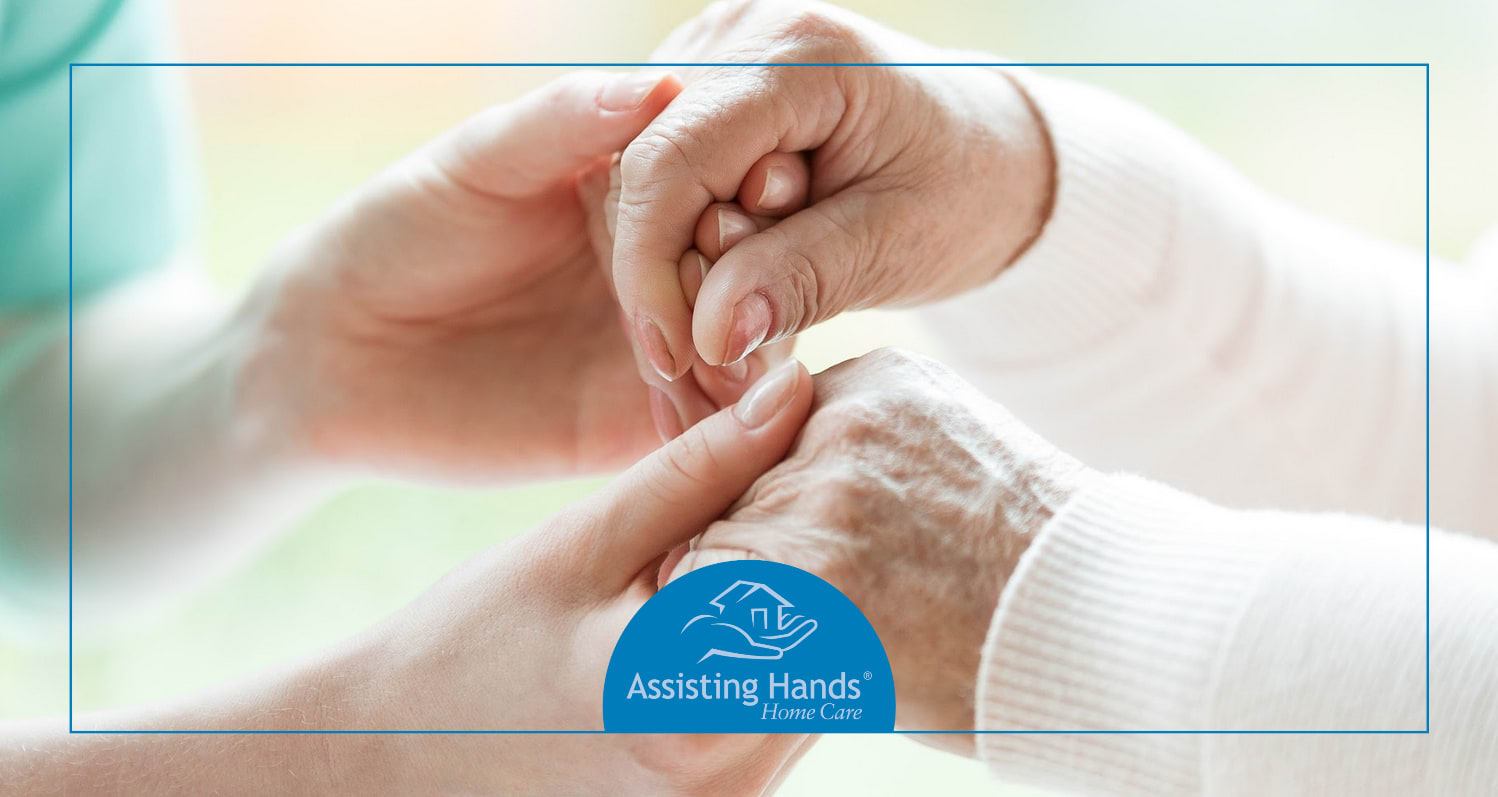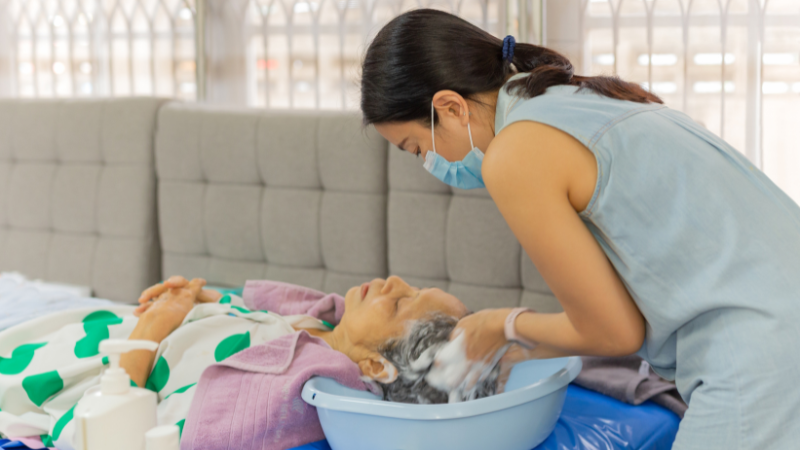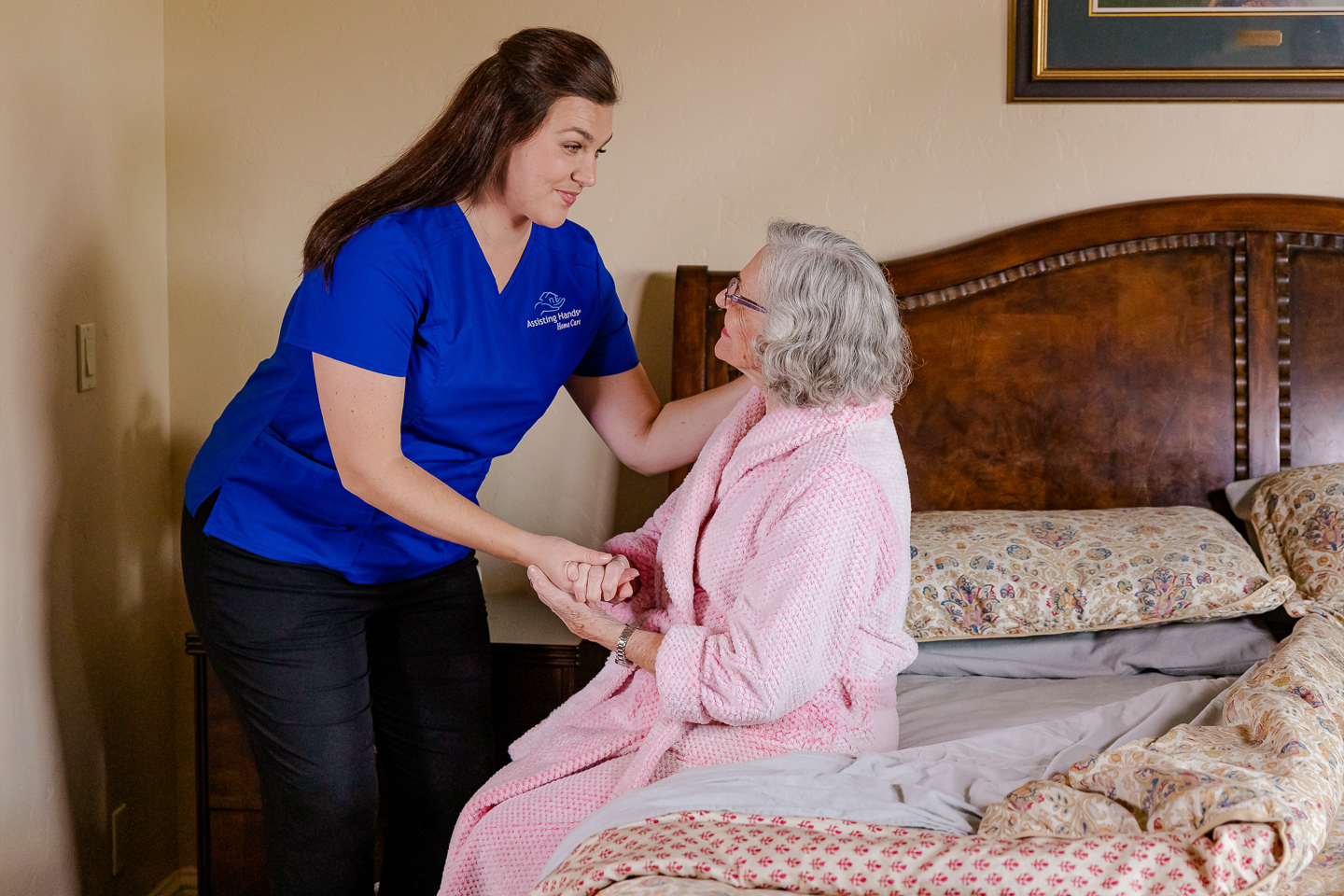

Bathing is a critical hygiene task but it is one that can be difficult or even unsafe for seniors who are bedridden. However, helping with an intimate personal hygiene task like this may embarrass the older adult. Here’s how to bathe the bedridden senior safely while respecting their privacy.
Why is bathing important?
Keeping the body clean is essential. Cleaning their skin helps seniors avoid irritation, inflammation, and sores that result from the accumulation of dead skin cells. Bathing washes away bacteria and fungus from contact with the environment—which decreases the risk of infection.
How often should bedridden seniors receive baths?
Seniors who are bedridden do not need daily baths. This is because bathing every day strips the skin of its natural oils, leaving it dry. Experts recommend older adults receive baths once or twice per week to prevent body odor and the breakdown of skin.
Read How to Give a Bed Bath to Seniors to learn more.
How is a bedridden senior bathed?
Bed baths are necessary when the aging person has difficulty with mobility or is unable to move. A caregiver may give a bed bath to an older person who is unable to care for themselves. Or the senior may suffer from dementia and no longer remember how to bathe.
When giving a bed bath, let the senior clean themselves as much as possible. Caregivers are encouraged to be relaxed as they help the care recipient undress and bathe. A caregiver who is not embarrassed and at ease is likely to help the older adult feel more comfortable.
1. Gather Supplies
Gather supplies prior to giving the bed bath so the process goes smoothly and the senior is not left unattended. Obtain a waterproof pad to cover the bed, 3 to 4 washcloths and towels, one basin for clean water, and one for soapy water, unscented soap, and a lightweight blanket.
2. Prepare the Room
Create privacy in the bedroom in which the bed bath will be given. Close the drapes and use a privacy curtain. Adjust the temperature in the room so that it is comfortably warm. Place the waterproof pad under the senior to protect the bed.
3. Check the Skin
Giving a bedridden elderly person a bed bath offers an opportunity to check their skin for sores. Pay close attention to vulnerable areas, such as those beneath the breasts or in the folds of their abdomen. Inspect bony areas, such as the elbow and shoulders.

4. Wear Gloves and a Mask
Wearing gloves is not necessary for the caregiver but is a protective measure if the aging person suffers from bouts of diarrhea or vomits. A mask is optional but recommended if the senior is sick with a contagious illness, such as the common cold or the flu.
5. Cover the Senior
Help the senior undress. Cover the older adult with a towel during the bath, exposing only the body part that is being washed. For example, wash and dry the elderly care recipient’s leg, then place the towel over it once finished. Do the same for the next body part.
6. Start With the Cleanest Areas
During the bed bath, start with the cleanest areas first. Most often this means starting the bed bath by cleaning their face. Wash the eyelids, then dab with a dry cloth to remove excess moisture. Using another washcloth dipped in soapy water, wipe their nose, mouth, ears, and neck.
7. Clean the Torso
Help the senior roll to their side so that their torso can be cleaned. Dip a clean washcloth in soapy water and wipe down their shoulder, arm, hand, leg, and torso. Dry that side with a cloth. Turn the individual over to repeat the process on their other side.
8. Clean Private Areas
Dump out the soapy water and refill the basin with clean, soapy water. The private areas harbor bacteria, so careful cleaning is necessary. In women, clean from front to back to prevent the spread of bacteria. Do not overlook the undersides of men’s private areas.
9. Wash their Hair

Change the water again to wash the senior’s hair. Caregivers might use no-rinse shampoo or a no-tear shampoo to promote the older adult’s comfort. Once their hair is shampooed, rinse with clean, warm water. Inspect the scalp during this process for any redness or sores.
Read How to Treat Dry Scalp for the Elderly to learn more about how to wash the hair for seniors prevent dry scalp.
10. Apply Lotion
After the bed bath, apply an unscented lotion to the senior’s skin to prevent it from becoming dry. Areas that are prone to dryness include the hands, arms, legs, and feet. Avoid applying lotion to parts that remain moist, such as under the breasts or in folds of the groin.
Bathing a bedridden senior is a straightforward process. However, the aging person may feel uncomfortable having a family caregiver help with this intimate task. In such cases, the senior may prefer help from a professional caregiver at Assisting Hands Home Care.

Our elder care agency is committed to serving the care needs of the senior community. Professional caregivers are responsible for a wide range of nonmedical care services designed to help older adults remain independent and give them an opportunity to age in place.
Duties include respectful help with personal hygiene tasks, like bathing, toileting, and dressing. Caregivers are trained to safely lift and turn seniors, thereby preventing injury to themselves and the care recipient. We provide mobility support and transfer assistance, such as from a bed to a chair.
Additional responsibilities include grocery shopping, healthy meal preparation, timely medication reminders, and transportation and escort to the doctor’s office, pharmacy, or senior center. We’re also pleasant companions who keep our aging care recipients from feeling lonely or isolated with light conversations, stimulating games, outings, and engaging hobbies.
When your aging loved one needs help with daily routines, like bathing, Assisting Hands Home Care is the solution. We are privileged to serve the elderly in The Villages, Florida, and the surrounding communities. Schedule your free in-home consult today at (352) 758-4512 and learn about quality senior home care.
